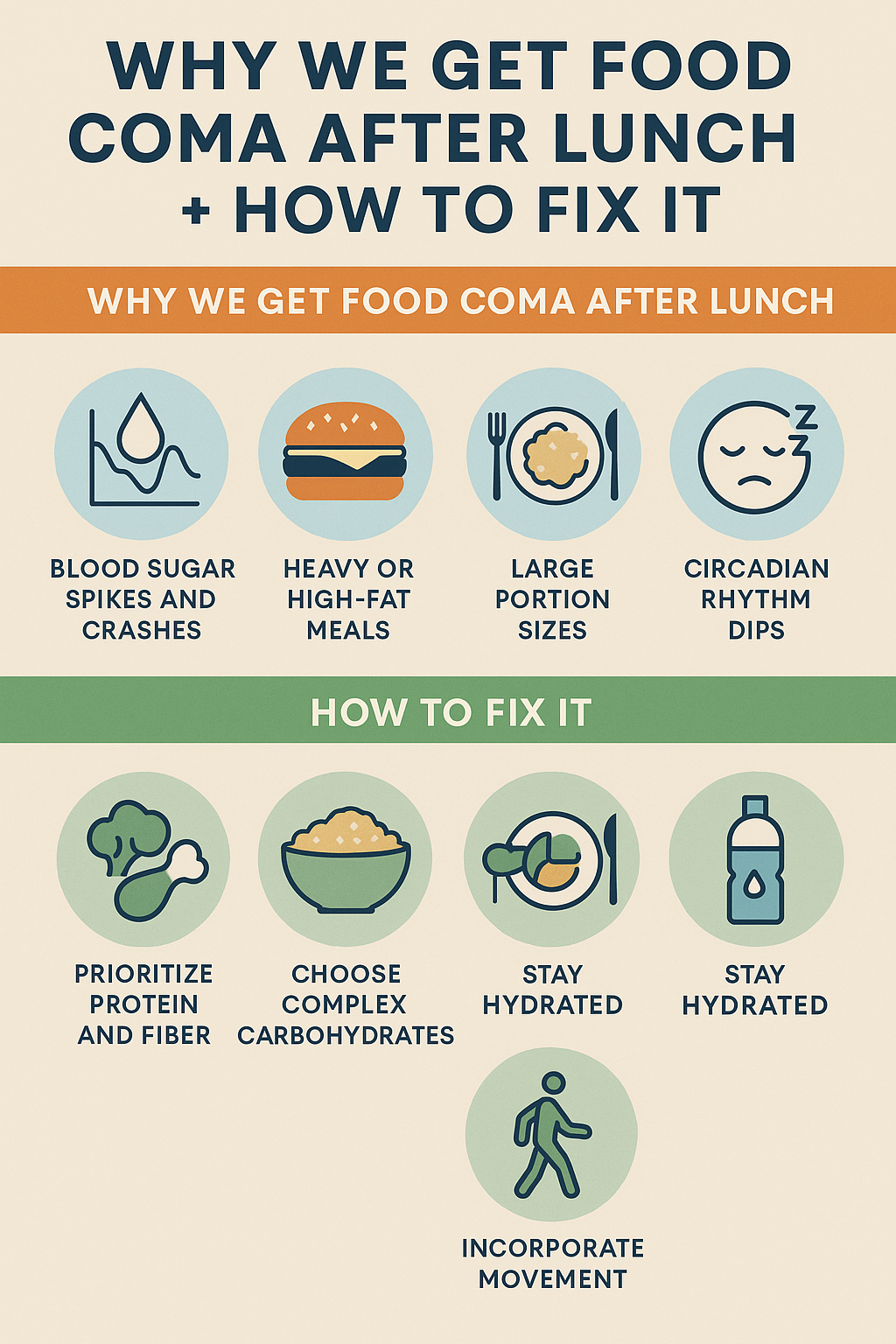For many busy working professionals, afternoons often feel like the hardest part of the day. You grab lunch, sit back down at your desk, and within an hour you feel sluggish, unfocused, and ready for a nap. This “food coma” is more than just an inconvenience—it can impact your productivity, mood, and overall performance at work. But what causes it, and how can you prevent it?
In this article, we’ll explore the reasons behind post-lunch fatigue and outline practical strategies to boost energy levels throughout the workday.
What Causes Food Coma After Lunch?
- Blood Sugar Spikes and Crashes
When you eat a meal high in refined carbohydrates (like white bread, pasta, pastries, or soda), your blood sugar spikes quickly. This sudden increase triggers your body to release insulin, leading to a rapid drop in blood sugar. That crash is what leaves you feeling tired, foggy, and ready for a nap.
- Heavy or High-Fat Meals
Meals rich in unhealthy fats and fried foods take longer to digest. As your digestive system works harder, your body diverts energy from other functions—like focus and concentration—causing fatigue.
- Large Portion Sizes
Eating oversized portions can overload your digestive system. The more energy your body needs to break down food, the less energy you have available for mental clarity and productivity.
- Circadian Rhythm Dips
The body naturally experiences a dip in alertness in the early afternoon (around 1–3 PM). If your lunch isn’t balanced, this dip can feel even more intense.
How to Prevent Food Coma and Stay Energized
- Prioritize Protein and Fiber
Build your lunch around lean proteins (like chicken, fish, beans, or tofu) and fiber-rich vegetables. These foods slow down digestion, keep blood sugar stable, and provide steady energy.
- Choose Complex Carbohydrates
Instead of white rice or bread, choose whole grains like quinoa, brown rice, or whole wheat wraps. Complex carbs release energy more slowly, preventing blood sugar spikes.
- Eat Mindful Portions
Instead of large, heavy meals, try moderate portions. Pairing a smaller lunch with a mid-afternoon snack (such as nuts, Greek yogurt, or fruit) can keep energy levels steady.
- Stay Hydrated
Dehydration is often mistaken for fatigue. Drinking water throughout the day supports digestion and keeps your body functioning at peak performance.
- Incorporate Movement
A quick walk after lunch or standing to stretch at your desk can stimulate circulation and fight off afternoon sluggishness. Even 5–10 minutes of movement makes a difference.
How a Health Coach Can Help
Knowing what to do and consistently applying these changes are two very different things. That’s where working with a health coach can make all the difference.
A health coach helps busy working professionals:
- Create personalized meal plans that support stable energy levels.
- Develop mindful eating strategies to prevent overeating.
- Build small, sustainable lifestyle habits around movement, hydration, and nutrition.
- Stay accountable while implementing new routines that improve focus and productivity.
By making intentional choices around nutrition and lifestyle, you can eliminate the dreaded afternoon slump and perform at your best all day long.
Ready to Ditch the Food Coma and Boost Your Productivity?
If you’re ready to take control of your afternoons, improve energy, and create healthy habits that last, Ellivate Wellness is here to help.
👉 Set up your FREE consultation today with Ellivate Wellness and start feeling your best—at work and beyond.


